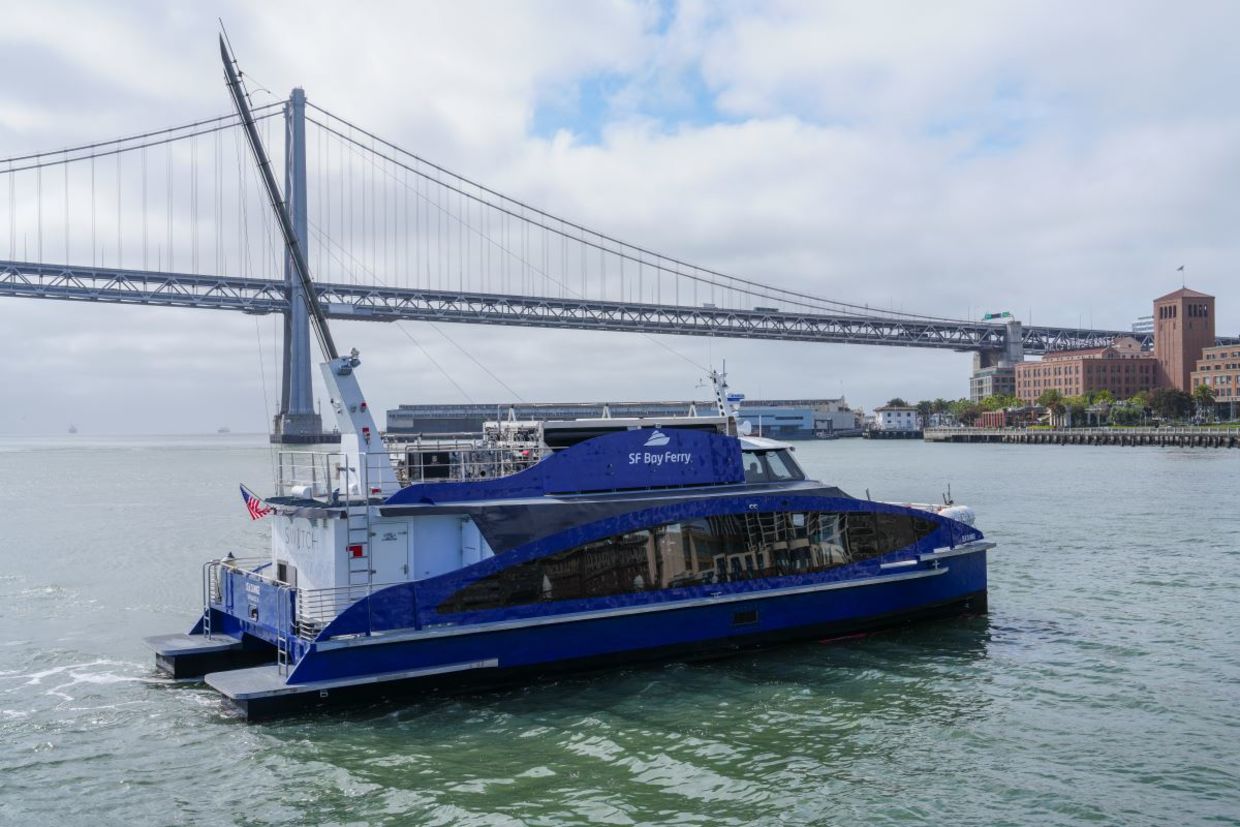Sea Change: The Revolution of Hydrogen-Powered Ferries Hits San Francisco
Key Ideas
- The world's first hydrogen-powered ferry, Sea Change, is leading a revolution in maritime travel in San Francisco, offering a quieter, vibration-free, and environmentally friendly alternative to traditional diesel-fueled ferries.
- Powered by hydrogen fuel cells, the 70-foot long Sea Change can carry 75 passengers, travel up to 300 nautical miles, and operate for up to 16 hours before needing to refuel via truck, without requiring new infrastructure for refueling.
- While the use of hydrogen in marine transportation raises concerns about its current production methods using natural gas, the potential shift towards more environmentally friendly hydrogen production methods offers hope for a greener future in the shipping industry, reducing greenhouse gas emissions.
- The introduction of hydrogen-powered ferries like Sea Change showcases a significant step towards cleaner and more sustainable maritime travel, emphasizing the ongoing efforts to develop innovative solutions for a healthier planet.
The Sea Change ferry, powered by hydrogen technology developed by Zero Emissions Industries, has marked a significant milestone in maritime travel by becoming the world's first hydrogen-powered ferry. Departing from the Ferry Building in San Francisco and traveling to Pier 41, the 70-foot long ferry offers passengers a unique experience of a quieter, engine noise-free journey thanks to its all-electric drive system. The ferry, capable of carrying 75 individuals, operates on hydrogen converted to electricity by fuel cells located behind the main cabin.
Unlike battery-powered ferries limited by weight and distance, the Sea Change can travel up to 300 nautical miles and operate for 16 hours before requiring refueling, a process facilitated by trucks without the need for additional infrastructure. This flexibility positions hydrogen-powered ferries as versatile and sustainable alternatives for the maritime industry, aiming to reduce the sector's significant contribution to global greenhouse gas emissions.
Although concerns exist regarding the environmental impact of current hydrogen production methods, the potential transition to more eco-friendly production processes like water electrolysis offers hope for a greener future. Despite these challenges, the introduction of innovative solutions like the Sea Change highlights the ongoing commitment to developing cleaner and more sustainable technologies in maritime transportation, ultimately contributing to a healthier planet. The article emphasizes the importance of these advancements in addressing climate change and promoting environmentally friendly practices in the shipping industry.
Topics
Projects
Renewable Energy
Innovation
Environmentally Friendly
Transportation
Zero Emissions
Shipping Industry
Sustainable Technology
Maritime Travel
Latest News
